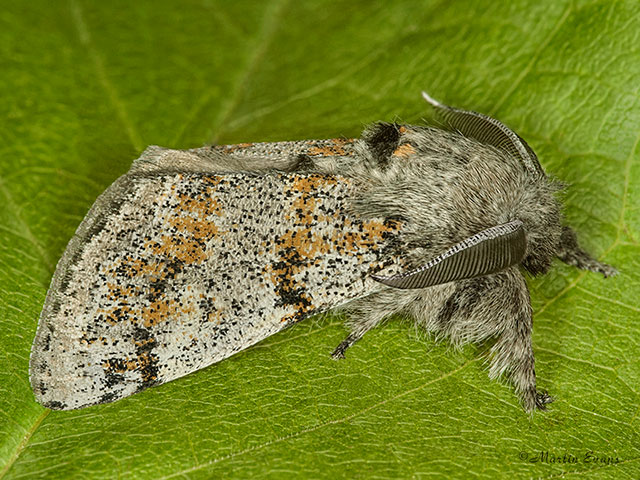Erebidae
72.016 Dark Tussock Dicallomera fascelina (Linnaeus, 1758)
Local
Similar species: In the north they are often much darker than the ones in the pictures despite them being from the Scottish Highlands. Pale Tussock Calliteara pudibunda does not have the two outer central cross-lines with orange scales along them. The cross-lines are often filled in between to form a band that is darker than the rest of the wing. It has orange antennae.
Forewing: 18 to 28mm
Habitats: Moorland, heathland, coastal vegetated shingle and sand-dunes.
Habits: The moth is occasionally found at rest on Heather during the day. It comes to light.
Foodplant: The larva feeds on Heather, Broom, Creeping Willow, other sallows and willows, Bramble, Hawthorn, Silver Birch, Downy Birch and other plants. The small larva overwinters in a silk spinning. It pupates on the foodplant. The larva may overwinter twice in Scotland.





